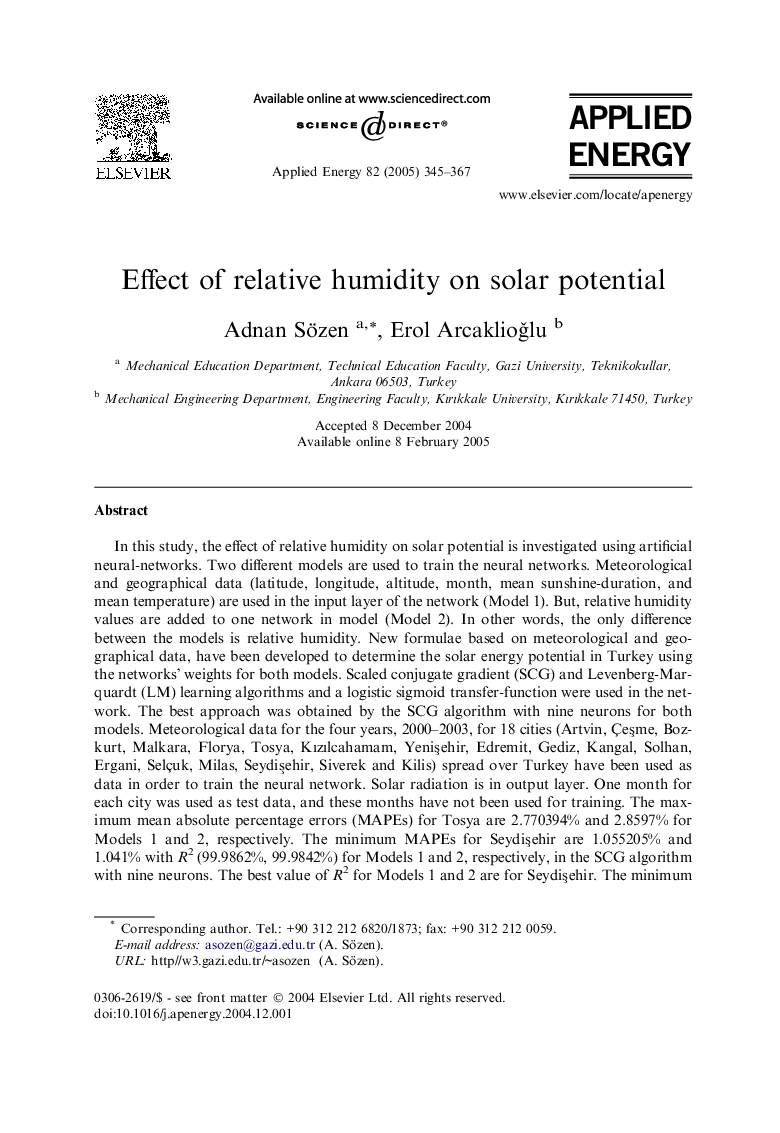| Article ID | Journal | Published Year | Pages | File Type |
|---|---|---|---|---|
| 10282118 | Applied Energy | 2005 | 23 Pages |
Abstract
In this study, the effect of relative humidity on solar potential is investigated using artificial neural-networks. Two different models are used to train the neural networks. Meteorological and geographical data (latitude, longitude, altitude, month, mean sunshine-duration, and mean temperature) are used in the input layer of the network (Model 1). But, relative humidity values are added to one network in model (Model 2). In other words, the only difference between the models is relative humidity. New formulae based on meteorological and geographical data, have been developed to determine the solar energy potential in Turkey using the networks' weights for both models. Scaled conjugate gradient (SCG) and Levenberg-Marquardt (LM) learning algorithms and a logistic sigmoid transfer-function were used in the network. The best approach was obtained by the SCG algorithm with nine neurons for both models. Meteorological data for the four years, 2000-2003, for 18 cities (Artvin, ÃeÅme, Bozkurt, Malkara, Florya, Tosya, Kızılcahamam, YeniÅehir, Edremit, Gediz, Kangal, Solhan, Ergani, Selçuk, Milas, SeydiÅehir, Siverek and Kilis) spread over Turkey have been used as data in order to train the neural network. Solar radiation is in output layer. One month for each city was used as test data, and these months have not been used for training. The maximum mean absolute percentage errors (MAPEs) for Tosya are 2.770394% and 2.8597% for Models 1 and 2, respectively. The minimum MAPEs for SeydiÅehir are 1.055205% and 1.041% with R2 (99.9862%, 99.9842%) for Models 1 and 2, respectively, in the SCG algorithm with nine neurons. The best value of R2 for Models 1 and 2 are for SeydiÅehir. The minimum value of R2 for Model 1 is 99.8855% for Tosya, and the value for Model 2 is 99.9001% for YeniÅehir. Results show that the humidity has only a negligible effect upon the prediction of solar potential using artificial neural-networks.
Related Topics
Physical Sciences and Engineering
Energy
Energy Engineering and Power Technology
Authors
Adnan Sözen, Erol ArcakliogËlu,
